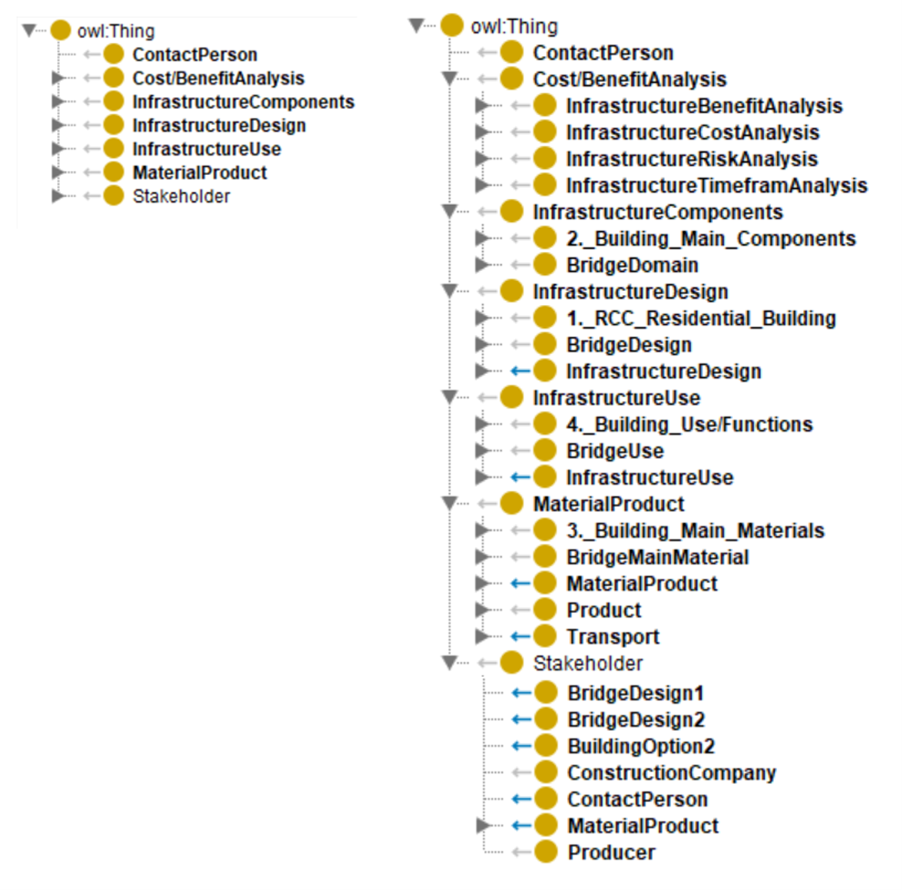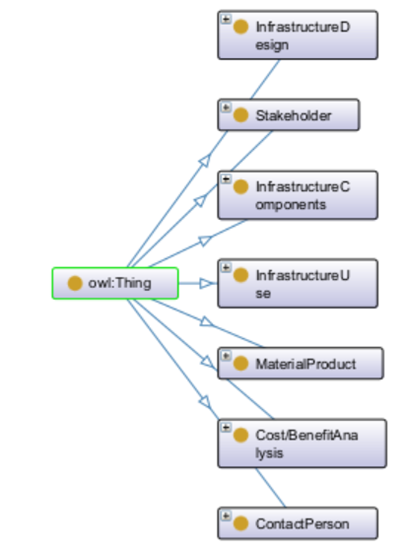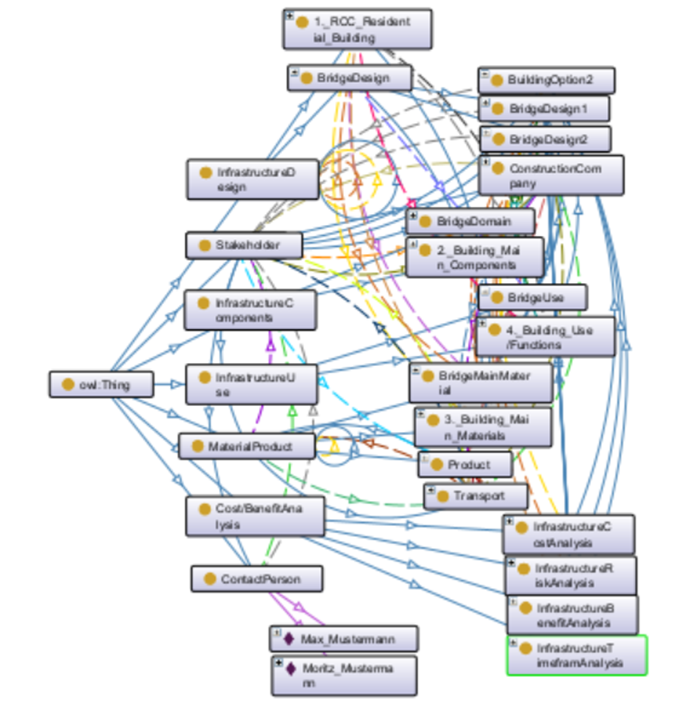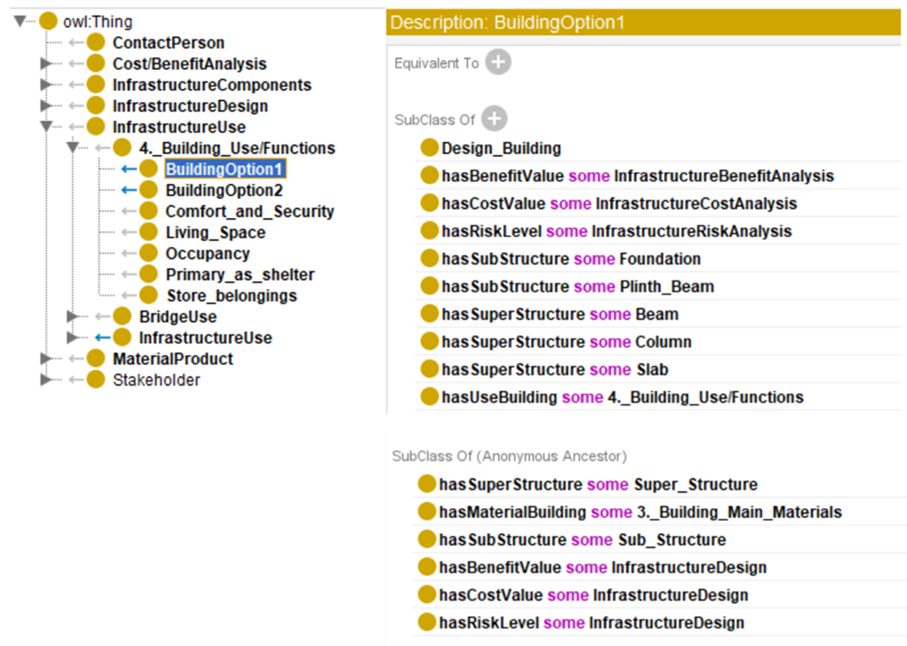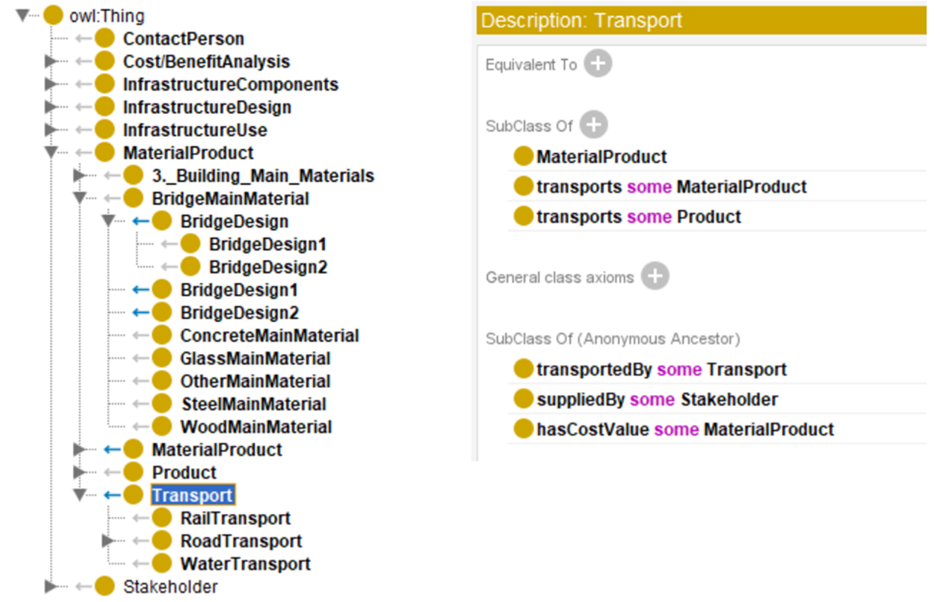Combination of ontologies :
- What is the purpose?
The purpose of this ontology is to create a unified framework that represents the various infrastructures in a city and their relationships, focusing on the transportation of materials and urban planning. The goal is to integrate the knowledge of different aspects of urban life and the infrastructure of a developing city. In order to have more infrastructure it is necessary to have people in charge, with the authority to do so. That’s why we have different stakeholders such as bis companies who are responsible for building urban life. More in detail, to bring alive the infrastructure, in this case we’re talking about a residential building and a bridge, the materials of the whole should be delivered to the correspondent construction site. There are several ways of materials shipping, depending on the distances, the time required and the cost or money that the stakeholder is ready to pay.
In summary the purpose is to analyse the shipping of the materials either for the building or the bridge, their cost and the delivery mode.
- What is the scope?
The scope is to enable a multi-faceted view of urban development, map out the interaction of the infrastructure. The ontology explores dependencies like traffic flow and urban planning goals, considering the possible need to evolve over time. Through increased urbanization, population growth, or technological advancements in transportation and construction.
By focusing on building such an ontology, stakeholders can enhance coordination between suppliers, contractors, and logistics teams, reducing inefficiencies and ensuring the smooth delivery of materials within budget and time constraints.
- Who are the intended users?
This ontology can be particularly used for decision makers (construction contractors and consultants) in maintaining infrastructure and predicting future needs. Urban planners, project and logistic managers and developers can profit from the ontology to create a cohesive and efficient urban environment, with thoughtful integration of pedestrian bridges, residential areas, and suspension bridges. They can use the ontology to simulate growth, transportation needs and environmental considerations.
- What is the intended use?
Be used as a foundation for a smart city framework where data from various infrastructures are collected and analyzed to optimize urban living. The intended use of this ontology, which focuses on materials delivery, time management, delivery methods, and costs in building infrastructure, is to provide a structured framework that facilitates efficient decision-making, improves communication, and optimizes the construction process. The primary intended uses are; material delivery optimization, budgeting by minimizing the costs, time management and supply chain coordination. Ultimately improving the efficiency and success of building infrastructure projects.
Engineering Challenge :
The challenges we faced while merging the ontologies were mostly combining three different ways of thinking. These challenges mainly stem from differences in domain-specific terminology, data structure, and conceptual alignment across the ontologies. In some cases there were some repetitions since the concepts are similar. Because of it, it was in a way easy to find a merging path, but on the other hand, it was challenging not to overlap classes or subjects.
Another challenge was to find cohesive correlations between the ontologies and avoid disturbance. It was necessary to create a regulatory framework within the merged ontology that can incorporate domain-specific compliance data. Merging the ontologies covering bridge construction, residential building construction, and materials supply management was a complex task, requiring addressing issues such as semantic alignment, conceptual overlap, granularity differences, data structure integration, and stakeholder management.
Establishing a hierarchy :
It is essential to understand that this model serves as a fundamental structure for organizing and classifying key concepts within our ontology. By establishing a clear hierarchy, we can effectively represent the relationships between the various entities, which facilitates reasoning and consultation of data in the various domains of bridge construction, residential building and material supply. Below it is possible to see the class hierarchy of the combined ontologies.
Sketch of the system/ Ontograf :
Before digging deeper into the Ontograf visualization, it is important to note that this tool provides a graphical representation of the ontology, allowing us to easily explore the relationships and connections between different classes and individuals. By visualizing the ontology in this way, we can gain valuable information about its structure, identify patterns, and better understand how the various components interact in the context of our construction and material supply domains. The Ontograf representation of our ontology is shown in more detail below.
The presented Figures, it is possible to see some of the connections and interactions of the merge ontologies. Refer to the Owl file for clear understanding.
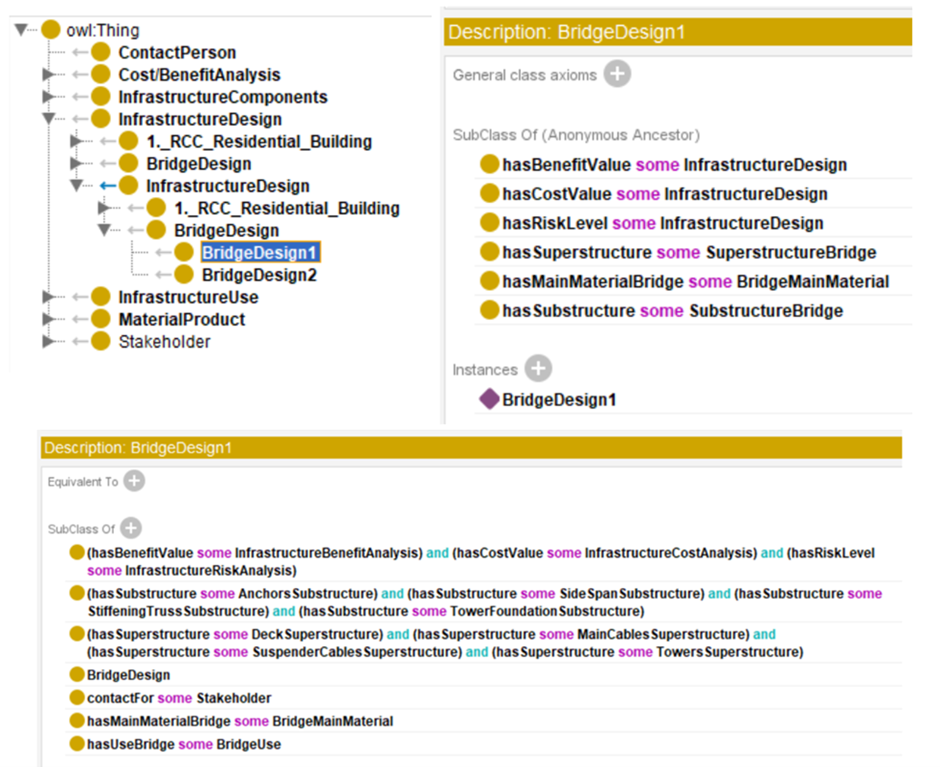
Bridge Design 1, subclasses connections and interactions.
Figure 2. Building Option 1, subclasses connections and interactions.
Figure 3. Transport, subclasses connections and interactions.
| Main Page | Introduction | Individual Systems | Integration Context | Combined Ontology | Combined Parametric Model |
